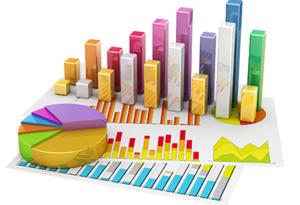Nursing, Software and Statistics
Software Column
by Allen McLean, RN, MN, MSc, PhD(c)
Allen is currently a PhD student in Computer Science at the University of Saskatchewan in the Computational Epidemiology and Public Health Informatics Lab. His research interests include the development of computer modeling and simulation software for addressing health systems challenges, chronic diseases and health inequities at the population level, as well as machine learning techniques applied to large health datasets. Allen previously attended the University of Victoria earning an MN and MSc (Health Information Science) in a unique dual degree program for Nursing Informatics professionals. Allen has over 20 years’ experience in healthcare as an ultrasound technologist, clinical educator, team leader and community health RN.
COLUMN
 There’s just no getting around it – whether you are a nurse conducting leading-edge research, or a nursing administrator or clinician translating that research into practice – statistics are unavoidable. A working understanding of the major fundamentals of statistical analysis is required to incorporate the findings of empirical research into improved nursing practice.
There’s just no getting around it – whether you are a nurse conducting leading-edge research, or a nursing administrator or clinician translating that research into practice – statistics are unavoidable. A working understanding of the major fundamentals of statistical analysis is required to incorporate the findings of empirical research into improved nursing practice.
Nursing knowledge based on empirical research plays a fundamental role in the development of evidence-based nursing practice. The ability to interpret and use quantitative and qualitative findings from nursing research is an essential skill for nurses to ensure provision of the best care possible for our patients. Increasingly, nurses are expected to participate in evidence-based practice to help ensure use of the best available evidence to make clinical decisions. To do this, we must be able to read and evaluate the research literature. We need to become familiar with basic statistical procedures and be able to evaluate the appropriateness of a statistical analysis and judge the author’s interpretation of results. For those of us undertaking a research project, statistical literacy is required to interact with other researchers and statisticians – and it is this group I would like to specifically address in this column.
There are many statistical software packages available for nursing research, many proprietary and many free. Some have been around for many years, and some are new on the scene. I would like to mention several of the more useful, and increasingly popular packages you may encounter or wish to try out. Each is available free in at least a basic version (often offering everything a nurse will need for even complex statistical analysis). All are available for Windows, iOS, and Linux operating systems.
It seems R is everywhere these days. You will find researchers in just about every discipline using this powerful open-source stats package. R is both a language, and an environment for statistical computing and graphics. R provides a wide variety of statistical (linear and nonlinear modelling, classical statistical tests, time-series analysis, classification, clustering, etc.) and graphical techniques. One of R’s strengths is the ease with which well-designed publication-quality plots can be produced, including mathematical symbols and formulae where needed.
Many readers will have heard of SAS (Statistical Analysis System). They offer a very comprehensive and free software package, their ‘SAS University Edition’. A particularly attractive feature of this package is its Data Analytics software. Data Analytics is certainly a hot subject in the IT community right now, and would be a fantastic addition to traditional nursing research.
An interesting option and excellent free resource from the CDC is Epi Info – a public domain suite of interoperable software tools designed for the global community of public health practitioners and researchers. “It provides for easy data entry and database construction, data analyses with epidemiologic statistics, maps, and graphs for public health professionals who may lack an information technology background. Epi Info is used for outbreak investigations; for developing small to mid-sized disease surveillance systems; as analysis, visualization, and reporting components of larger systems; and in the continuing education in the science of epidemiology and public health analytic methods at schools of public health around the world.”
For the qualitative researchers among us, the CDC offers CDC EZ-Text – a software program developed to assist researchers create, manage, and analyze semi-structured qualitative databases. “Researchers can design a series of data entry templates tailored to their questionnaire. A response to a question may be entered either as a verbatim transcript (e.g., from a tape recording), or a summary generated from the interviewer’s notes. Data from respondents can be typed directly into the templates or copied from word processor documents. Following data entry, investigators can interactively create online codebooks, apply codes to specific response passages, develop case studies, conduct database searches to identify text passages that meet user-specified conditions, and export data in a wide array of formats for further analysis with other qualitative or statistical analysis software programs” (2016).
With a solid understanding of the fundamentals of statistical analysis, combined with current statistical software packages, evidence-based nursing research has much to offer the healthcare community.
Sources for Statistical Software
Centers for Disease Control and Prevention. (2016). Epi Info. http://www.cdc.gov/epiinfo/index.html
Centers for Disease Control and Prevention. (2016). CDC EZ-Text. http://www.cdc.gov/hiv/library/software/eztext/installation.html
Statistical Analysis System. (2016). SAS University Edition. http://www.sas.com/en_us/software/ university-edition.html
The R Foundation. (2016). The R Project for Statistical Computing. Retrieved from https://www.r-project.org/








